I feel as though I should start off every one of these Newsletters with the phrase BLEEDING COOL SCOOP! given how often the contents of what I pound away at here on Saturday becomes multiple “news” articles on that site by Monday. You can read them over there if you want, I suppose, but if you want to get ahead of the curve, why not go straight to the source?
Anyway, I’ve been working away at the long-promised index to this feature, and my efforts have confirmed for me that I did indeed feature the unused SPIDER-GIRL #60 cover that I showed off last week before. It was back in Installment #42 two years ago. And what’s more, I’ve repeated a number of other such items as well (including what I had planned for this week, necessitating a change of plans.) Hopefully, once this index is done, it’ll eliminate or at least cut down on the double-dipping. By that same token, nobody had as yet pointed out it happening, so if you haven’t seen it, then it’s new to you, I guess.
Elsewhere, my extremely talented brother Mighty Joe Castro and his band the Gravamen have just released a new single, which you can experience for yourselves at this link. It’s a cover of a classic tune, but I’m told that all-new material is in the pipeline as well, and the full album BETWEEN THE LIGHTNING AND THE THUNDER will be released on June 6th. Something to look forward to.
All right, it’s time for the spine of our operation, the part where I answer this week’s assorted questions from the audience. Beware of flying scoops, now! Scoop! Scoop! Scoop! Watch your head, scoop!
Joe West
Will we hear more about the post-Imperial line of Marvel Cosmic books at SDCC this summer?
Possibly so, Joe, but honestly we’re not quite at the point of planning out our SDCC operation just yet.
Leigh Hunt
what was your favorite new character/title where you started with someone/something from their/its debut?
Oh, I don’t know, Leigh. There have been quite a few. But going back into my sordid past as only a fan, I was very much a fan of the New Doom Patrol when they were introduced in SHOWCASE #94 years after the original team had all been killed off in the final issue of their series. I don’t know whether this quite counts, though, as the New DP never quite caught on and outside of some scattered guest appearances, it would be more than a decade before those characters were front-and-center in a series of their own. And by that time, my interest in them had waned. Not quite the same thing, but I really liked Captain Comet when he was reintroduced in SECRET SOCIETY OF SUPER-VILLAINS #2. He’d been a sort of science fiction super hero years earlier in STRANGE ADVENTURES, but I wasn’t familiar with that history when he first turned up again, so he was effectively a new character to me.
Karl Kesel
How did the publisher KNOW it was Plastic Man who was selling the comic? If he became the cover feature in "just a few months" (I certainly don't know the exact timeline) was there any way the publisher could actually have sales info to base that judgement on? Assuming a lightning-fast editorial/publishing decision to cover-feature Plastic Man, is it possible that the publisher/editor simply recognized the quality of the strip— and/or how unique it was— and decided to showcase it for that reason, and then sales followed? (And if sales didn't follow, I'm sure Plastic Man would have been taken off covers just as quickly.) I mean, if I was the editor of that book, and one feature was so clearly better than the others— or even if it just tickled my fancy more than the others— I'd certainly spotlight it. Especially since Plastic Man's powers meant covers that would stand out on a crowded newsstand.
I’ve asked this selfsame question myself, Karl, and never really gotten an answer that satisfied me. It seems like it was some combination of reports from local jobbers to the retailers and reader letters mostly, with the occasional case where some editor’s personal preference prevailed. But I can think of few other instances where a filler-page feature was promoted to the main cover slot and the book became way more popular, so QUALITY wasn’t responding to nothing in making Plastic Man a star and increasing the length of his stories. Wherever they got it, it was clear that the character was a hit.
Chris Sutcliffe
How often, if ever, does a comic get to completion with no notes from you? Is there ever a team that just nails every part and you just let them get on with it?
I think the answer here is an absolute zero, Chris, depending on what you mean by notes. But there are always things—adjusting the positioning of balloons, spelling or punctuation mistakes, characters needing to be named, pages not set up properly against the image area—that need to be done on every comic. Now, if you’re talking about story content specifically, again I don’t know that it’s really any more than zero, but there have been plenty of times when a writer’s first draft script was ready to go off to be drawn without comment, and plenty of times when an artist’s rough page layouts and finished artwork required nothing more from me that a “looks good” comment. But it’s a balancing act. I’m never looking to insert myself into the process unnecessarily, but neither am I apt to abdicate my responsibility to oversee the work.
Jesse
I appreciated Matthew's comment about a comic trope he took a while to catch on to. For me, it was reading the OHotMU and seeing so many villains were mobile, and thinking they were in Alabama. Do you have anything like that in your reading past?
Most of the things I can think of were pronunciation-based, Jesse. Like practically every kid in the world, I at first pronounced Sub-Mariner as “Sub-Mareener” and Magneto as “Magnet-o”. I also didn’t understand Annihilus’ name at first and pronounced it “Ann-uh-HILL-us”. Also, as a much younger reader, I thought the JSA was the “Justice Sota-ry of America”, whatever that might be.
Hank
what exactly qualifies as an event for you, Imperial is a 4 issue miniseries that could, as you have called it, 100% be classified as an event, but what about things like the upcoming Giant-Sized X-Men series of one-shots? My impression there is that it will have big ramifications on the X-line, and I could easily see someone classifying that as an event
It’s a somewhat shifting scale, Hank, but for me, an Event is a storyline that impact on a good portion of the overall publishing line, typically with events that will ripple into those titles as tie-in stories. IMPERIAL may or may not do that, but GIANT-SIZE X-MEN definitely won’t, so it doesn’t make the cut, regardless of the fact that some of its content will make an impact on storylines to come in the future.
Tom Galloway
I'm curious how the New Champions book happened. It strikes me as strange because unlike the previous Champions attempts at doing a Marvel young heroes book, it's all new characters who'd only debuted in a few very recent Spider-Woman issues. Despite their names and some outfits, they have no connection to any existing characters. And this isn't meant to say it's a bad book, but I'm not seeing anything special in the writing or general set-up of the book (i.e. while a long time back, Runaways also featured all-new characters, but their set-up and interactions were very different from, say, New Warriors or anything else from Marvel. Or to use a more recent one, Strange Academy had connections to existing characters, showed such as teachers, had a unique setting and point of kids learning magic, and the characters were a very diverse set of Marvel magic types/species). So, why the decision to give these newbies a book that doesn't really have a unique or different hook to it?
Nothing succeeds like success, Tom. Those New Champions characters were conceived at first as part of a variant cover program inspired by the success of Spider-Boy. The idea was to create potential sidekicks for other characters in the Marvel line. it was just a bit of fun, but those covers sold well and both readers and creators began to ask about where they might show up. From there, a couple of them appeared in SPIDER-BOY and SPIDER-WOMAN and so forth, and those issues evidenced an uncommon demand as well. So we decided to roll out a book and see what happened, the result of which is NEW CHAMPIONS.
Stefan
When did Marvel first start using a formal P&L process as opposed to those in charge simply deciding that they believe a project will sell? And are there any restrictions set on how far ahead writers can write for newer books, so you don't wind up with a bunch of unused scripts if the book is canceled?
We’ve always used a formal P & L process on our projects, Stefan, as far back as I’ve worked at Marvel and likely all the way back to the beginning to some degree. We just haven’t really talked about it publicly as much. And there’s certainly a difference between writing scripts for, say, FANTASTIC FOUR, which is a title that is unlikely to be completely cancelled while Marvel is a going concern, and something like the previously-mentioned NEW CHAMPIONS which is more of a calculated risk.
David Brazier
very sad that Weapon.XMen is only five issues. Great writer and artist. The first two issues are so strong. Surely it needs more time to establish itself? This is obviously a projected sales matter - what’s you opinion on this?
This is one of those ideas that gets thrown around whenever a particular project reaches its end, David. But the plain fact of the matter is that in my experience, I can’t think of any instance where a failing title suddenly experienced a turn-around and became a solid seller. So the fact of the matter is that the best chance you have to capture enough of an audience is with issue #1, at the launch. And if you don’t, it’s unlikely that you’re going to suddenly be able to turn things around later. So I’d have liked it if WEAPON X-MEN had been able to go on longer, but I’m also confident that if the numbers are weak now, they won’t be any less week at issue #8 or #12 or whatever.
Taylor
As a reader, I vastly prefer a six issue trade for an ongoing book and 4-5 issues for a miniseries. Who decides this?
Donny Cates revealed that part of the reason he pitched Rogue and Gambit as a replacement to the maligned Kitty and Colossus marriage was because Rogue and Gambit as characters could handle getting divorced. So to me, that always signified that divorce was somewhat built into the narrative conceit of them being married. Now obviously, Gail isn’t gonna break them up (although a little strife and drama would be fun), but if a writer in the future - after Gail’s run has ended, of course - came along and had a (good) story to tell that dissolved this marriage, is that something you would consider? Or are Rogue and Gambit the opposite of Pete and MJ and thus need to be married in order to “work”?
Having balanced a satisfying enough package against a cover price that wasn’t too daunting, Taylor, we’ve fond that the ideal length for a trade paperback collection is 5-6 issues, and so we try to build most of our story arcs and series runs around that length. Occasionally, we have situations where a larger book is needed, and in some instances we scratch around to find relevant ancillary material to fill out a shorter collection.
And I don’t think that Rogue and Gambit need to be married in order to work—them being married is still a relatively new thing in terms of their history. By that same token, I’m also not really looking to break them up. Readers in general seem to be invested in them as a couple.
Joel Zorba
Why are the characters in the Avengers books almost always the same, but new x-characters are always created in each new ongoing X-series? And most of the new x-characters will be left aside whenever a new run begins.
It’s because the premises of both series are different, Joel. The Avengers are Earth’s Mightiest Heroes, which implies that they are people with some manner of track record under their belts to become associated with such a group. Whereas the X-Men are dedicated to finding and training new mutants in the use of their powers, which implies a constant stream of new characters being discovered and coming into the fold. As for your last point, that all depends on how good of a job we do, doesn’t it? If readers want to see more of a new character, and creators are interested and invested in a new character, then they’ll have legs and go on—just as Wolverine and Storm and Nightcrawler and rogue once did.
JV
It has been a while since you did a super hero movie review - I think the last one on your blog was Spider Man No Way home.
Want to share your thoughts on some post Endgame/No Way home movies or TV series? DC or Marvel? Wandavision? Falcon/Winter Soldier? Eternals? Gunn's Suicide Squad?
I’ve tended to talk about anything along these lines that might warrant it in the Monofocus section, JV. But when it comes to the Marvel Studios output, given my position and my access to inside information, I don’t really think it’s appropriate for me to speak too in-depth on those features, television or film.
Davi Weasley
It's fun to get a digital copy with each of my print books. Someetimes there's a little sticker I peel off, and a code I enter, and sometimes I'm instead asked to email in a photo of the book. Is the latter a sign that the book was running late, or is it just the vagaries of the publishing industry?
It’s even simpler than that, Davi. It all depends on where that particular issue was printed. Some of the printers that we deal with don’t have the tooling needed to do the stickers. In those cases, we go the other route.
Kurt Busiek
But I suspect another reason. While DC collected all the SPIRIT stories in their Archives series as a matter of, well, being archival, I doubt anyone there wanted to stick images of Ebony White, offensive racial caricature, into a book that wasn't even reprinting stories in which he appears.
And once they decided to take Ebony out of those covers, it's a simple step from there to, "Well, if we're changing some of them, what the hell, let's just take all the SPIRIT characters out."
You may be right on this, Kurt. Certainly, I can’t see anybody in this day and age fighting to keep Ebony. He’s only on one or two of those covers, though, so taking him out wouldn’t necessarily have required the Spirit to have been erased as well. But things have been done for smaller and stupider reasons than this, so you may well be right.
Betsy
What's the next event where we can expect some huge x-books announcements?
I think it depends on what you mean by huge X-Book announcements, Betsy. We announce new stuff all the time, but we are more likely to drop a bunch of news at once around a big convention or similar showpiece.
Steve McSheffrey
With their personalities so far, The Outliers just don't feel like they have any real potential for lasting outside of this book. Their powers are mostly weak or weird so and don't feel like anyone will be inspired to use them for that reason. Except maybe dead kid or horse girl (I can't even retain their names or super hero names) I could see them on that bus full of ex-Xavier students that got blown up once upon a time. TBH, the Exceptional seem like one story arc fodder too but the overall theme of that book works better.
That’s an opinion, Steve, and one you’re certainly entitled to. But I can’t say that I agree.
Thom Dunn
When planning out a storyline like that — one that specifically builds on minutiae of controversial comics from years past — how does one *avoid* turning it into comics-about-comics? Is it about the lasting impact on the character? How can one (if at all) objectively evaluate the quality of a storyline which existence is entirely dependent on other stories?
Not having worked directly on that Nick Spencer AMAZING SPIDER-MAN run that you’re referencing, Thom, I can’t give you any specifics in that case. But in general, the question is really does this story work regardless of whether you have read the earlier stories that are being referenced? It’s like any part of a character’s history: if there’s value to something involved in it, it can be worth revisiting and expanding on, so long as you present the information in a way that doesn’t feel alien to those readers who came along later. But really, mostly it’s a judgment call.
Nick Smiles
Which is my long-winded way of asking if you can shed a little light on the circumstances that brought this mini into being, considering Mar-Vell had been definitively and permanently killed off some years before.
The UNTOLD LEGEND OF CAPTAIN MARVEL limited series was a project that new editor Bob Harras wanted to do, Nick. Apparently, he always liked that version of the character when he was just a reader growing up, and saw some untapped potential in it. So when he threw the idea out at an editorial meeting and nobody else said anything, I volunteered to write it. And so it was.
Iioo
is it company policy to count anniversaries from the cover date, rather than release date?
“Company policy” is too strict a term for what we do in most cases, Iioo. In the past, comic book cover dates tended to be set three or four months ahead of a title’s street date. So in the past, anniversaries tended to be calibrated against cover dates—not the issues on sale in those months but the ones that carried those same month-dates. As that changed over time, it became apparent that it would be smarter and more accurate to time the celebration date to the actual on sale publication date of the books in question, so that’s what we do now.
Jim MacLeod
since you're involved with stories throughout the creation process, how are you able to keep track of the final story, especially with so many ideas getting added and dropped throughout the process?
You don’t really keep track of the final story, Jim, because you don’t often start out with that definitive a destination. Rather, you begin with an idea, somebody’s idea for a new story, then you think about it and examine it and revise and refine it along the way, until eventually you have the completed piece. And you both use written documents—e-mails, spreadsheets, assorted post-it notes, etc—as well as just your own memory to keep it all together.
Spike Stonehand
I recently received the very deluxe edition of Jack Kirby's SKY MASTERS OF THE SPACE FORCE Sunday Strips. Each one was digitally recolored in the style of the original 4-color dot system. I assume this might be more expensive, but is there a reason Marvel's recolorings of old comics don't use this same technique? I think it adds a lot of appealing texture, especially to digital images.
if you ask ten different readers their preferences on reprint reproduction, Spike, you’re going to wind up getting ten different answers. There aren’t really any universal standards that everybody prefers. So for me, not taking advantage of the improvements in printing technology in releasing modern editions of these stories is akin to not presenting the material as well as could be. Those old dot screens were the cheapest way that color reproduction could be done in an earlier time, but we don’t need it now. So while it does have a nostalgic component to it, especially for those who grew up when that was the norm for comic books, I don’t think it speaks that well toa contemporary audience. (And I’m speaking here of the process in general, I haven’t seen the SKY MASTERS collection you’re talking about.)
Anthony Enzo
having heard a small bit of Mark Gruenwald focused talk this past week outside of the comics podcast world, i'm inspired to ask about your opinion on the man's work on my favorite run of Captain America. any favorite storylines and reasons why or why not?
I think that Mark’s work on CAPTAIN AMERICA was probably at its best over its first couple of years, while he was working with Kieron Dwyer and Ron Lim. The John Walker Replacement Cap sequence is probably the best of the run, and storylines like the Bloodstone Hunt were quite enjoyable as well. As time went on, Mark was both being paired with less accomplished or appropriate artists and his approach was also feeling more and more out-of-step with the zeitgeist of the moment. But his love for the character was genuine, and his more classically DC unblemished paragon approach to Cap was genuine, even if it wasn’t always in vogue.
Jordan L
do you have any legacy characters from the big two that you prefer to the original?
I don’t think that it’s really true any more, given developments over the past two decades for both characters, Jordan, but I think that Wally West as the Flash was a huge step up and forward from Barry Allen. Barry was my guy growing up, but there’s no getting around the fact that he wasn’t all that psychologically complex. He was a creation of a different era, and the best thing he did for his own legacy was to die, becoming in the process the patron saint of DC super heroes. But Wally, a sidekick character who now had to step into the shadow of his former mentor, one who had become that patron saint, provided a lot more character grist, more for him to grapple with and have to live up to. Today, he’s become an almost carbon copy of Barry, though, with a wife and an extended family of super-fast kids. So he can’t quite be that any longer.
Zac
Why is Eli Bradley not utilized as Patriot anymore.
He is, Zac. We just haven’t had a whole lot of occasions to use him as Patriot recently.
Cian McDarby
It feels like recently there’s a reluctance to kill real proper characters off. Now, this is a difficult topic to discuss without sounding like a psychopath but I like seeing characters die, I enjoy the ripples of them being dead and gone. It also makes good housekeeping, there are too many Spiders, Bat-Kids and Flashes. But it feels like the character of importance who’s been killed and stayed dead these days is Alfred. So I suppose my question is: What’s your stance on killing characters off? They’ll inevitably come back I know, but I’m fond of having characters be dead long enough to be missed, which requires killing characters that would be missed (so not deaths like Sentry), though housekeeping crisis fodder is a trope I know I’m probably alone in loving.
I feel as though death has become such a revolving door that even the characters are often depicted as not believing in it anymore, Cian. So to me, if we’re going to kill a character, whether they’re going to come back shortly or not, we need to treat it with absolute seriousness, and have our heroes react to the situation as though that character is legitimately 100% dead. And I don’t mind killing characters per se depending on who it is. A lot of creators tend to focus only short-term, on the particular story they’re grappling with, Which is as it should be. But in my position and with my vantage point, I also need to be thinking long-terms about this stuff. In that context, it becomes more challenging to kill off a character and mean it. In the case of Alfred, I feel like his death was a mistake. Certainly BATMAN hasn’t been improved by his absence. so while that made for a nice moment of drama, long-term something is missing.
Esh
What do you think speaks to us veterans who have been reading and loving comics since the 1970s? Is it a combination of a great medium (visuals and compelling story) and great nostalgia from a simpler time of youth and our halcyon days?
Depends on the person, Esh, it’s likely different in every case. But probably a little bit of all of this.
LE
are there any plans to get Ben Percy on an X-Men team book, proper? I loved a good chunk of his Krakoa X-Force, and I think he might have the kind of big plotting juice that can give a 20-page comic a thicker, meatier feel.
On another note, EXCEPTIONAL is pretty perfect, in my opinion. I love it, but the recent enemy reveal was a teensy bit deflating. The end of the Krakoa era saw an iteration of that character acheve godhood before being dramatically, cosmically sliced to pieces. The character and its handful of variants had a huge handprint on the Krakoa arc in general. Was there any hesitation to bring him back into the mix right away?
Oh. One other thing. You have the Phoenix and Richard Rider in the same book right now. Does that bring back memories of people bugging you about those two characters on Formspring?
At the moment I don’t really have an X-Men team book to give Ben, LE. He’s already writing a bunch of stuff for us. On the matter of the character that you’re talking about, what we wanted to do was to put the new young Exceptional team up against the biggest, most established X-Men threat that we could. Coming out of the Krakoa era, that list was a lot shorter than you would typically imagine—so many villains had become allies, or their stories had left them in untenable positions, such as Apocalypse. So with that in mind, that character seemed like the best choice in terms of being a recognizable name X-Men foe that the masses would recognize and respond to. And I don’t really retain all that much about the questions put to me in the past, LE, so I had forgotten about people clamoring for Rich and for Phoenix. Today, I’m more focused on what people are asking for right now, like the conglomeration of Betsy Braddock fans who have been vocal about wanting her to show up in another series.
Andrew Albrecht
I had a question about the new X-men #14 book! In it, we see Ben, a gay Chinese mutant, talk to Magneto about his perspective growing up persecuted. Off the top of my head this is the second time we had Mags have an important talk with a gay mutant, the first being young Bobby in the Marvel Voices special! Is part of the reason for these scenes because Magneto’s experience as a survivor, can relate to the gay men wearing pink triangles at concentration camps?
Perhaps, Andrew. I can’t say that I can tell you precisely what Jed was thinking when he wrote that scene. But from my point of view, it had less to do with that earlier scene and more to do with the simple fact that the two characters are in the same location and have something in common. Doesn’t mean that you’re wrong, though.
Deborah
I’m disappointed that the positive character development he had in Al Ewing’s Resurrection of Magneto and at the end of the Krakoa era seems to be being undone to some extent in From the Ashes.
Has this happened because you, as editor, disliked the way his story played out in the Krakoa era and wanted a return to an older status quo with the character? Or, given that it seems Sir Ian McKellen is reprising his role as Magneto in an upcoming Marvel movie, is it a move to make the comics version more in synch with the movie one? That would be incredibly disappointing to me (just as the retcon about Quicksilver and the Scarlet Witch’s parentage was incredibly disappointing a decade ago) but it would explain why Ryan Stegman’s original character designs for Magneto were basically drawings of Ian McKellen playing him.
If it is more because you as editor think the character works better as old and bitter rather than the younger, more dynamic End of Krakoa version, does this also mean we’ll never get to see him interact with his daughter Polaris again? I ask because I think I remember you saying in an interview that Magneto being Lorna’s father was a story beat the books were stuck with, which suggests you don’t much like it and might not want it to feature.
I’m afraid that you’re connecting some dots here that are actually unconnected, Deborah, which sometimes happens. But the truth is much simpler and much stupider. When I was first beginning to map out the structure of the different groups in the post-Krakoa era, looking for things that would make fans do a bit of a double-take, I hit on the “Professor M” bit, and so I jotted it into my initial document. That immediately led us to the R-LDS storyline, which hasn’t entirely played out yet but which was another thing that I wanted to get into, so that’s the way we went with Magneto. Having Magneto on a Cyclops-led X-Men team also made a very specific statement. (in the original conception, that team was going to be based in Magneto’s old volcano base from UNCANNY X-MEN #112-113. Jed’s choice to place them instead in the factory in Alaska was a better idea.) And most of this was percolating while Al was simultaneously working on RESURRECTION OF MAGNETO, so there wasn’t any particular coordination or reaction there. As for Ryan’s sketches of the character, I’d say that after 25 years, Magneto resembles Sir Ian in the minds of many. On the question of Polaris, I’m sure that we’ll get around to exploring that relationship at some point. But it’s a weird one for me, as I grew up in a world where a false Magneto had claimed to be Polaris’ father, but wasn’t. The turn to making that fact true came years and years and years later, so it doesn’t feel formative to the characters to me, and so it isn’t a pivot-point that I turn a lot of my thinking on.
ComicbookDad531
I found a book of comics from 2008 and when I went through it and it was banger after banger!! Names like Brubaker, Fraction, Bendis, Johns, Rucka, Simone, etc etc. Do you have a year from the 2000’s that really sticks out for you?? Maybe from a Marvel perspective and maybe from an industry perspective?
I don’t know that this is really for me to say, Dad, since I wouldn’t have been a reader at any of those points, but rather a participant. But if I had to give you an answer, maybe around 2006. At that point, CIVIL WAR was coming out, and ANNIHILATION was beginning, and over at DC the weekly 52 was running—so that feels like a good, fertile period.
Seastar
Whatever happened to the writer-editor? Or the editor-writer? Louise Simonson, Tom DeFalco were both editors who also wrote comics, sometimes while taking on increasingly big duties at Marvel. When will you and Wil Moss pen the next AvX?
Writer-editors have been a thing of the past for decades, Seastar, and for good reason. That system made it too easy to abuse, for editors to trade assignments with one another and to shut out those who were dedicated writers in favor of people who were on staff who might not have been in the same league. Policy for the longest time now forbids those on staff from earning any additional revenue from working on the material—whether than be writing, penciling, lettering, coloring, whatever. And accordingly, that means more opportunities for those who are dedicated to those disciplines. Back in the day, the pathway to becoming a freelance writer was to come on staff as an editor, become known to the rest of the staff, accumulate freelance assignments and then go completely freelance yourself. And some good people came out of that system. But also a huge volume of not-very-good work as well.
CG
I actually had a question that I have been thinking about since I know #1s and jumping on points help bring in new readers and sales. I think in the early 2000s a wave was launched that replicated a television series. I think it was Tsunami? And maybe Quesada's baby? Was that not successful? We know nowadays that series don't last that long. Would it be better to train readers to get used to a 12-18 issue run with a creative team with maybe a mid season finale and then the main event at the end like a season finale? Since we know events are kind of a big staple. Is there a reason that didnt end up working for Marvel? Do you have any insight or tidbits on this? Instead of fans complaining about a series getting cancelled they can now know the format will be big intro, mid season shenanigans, and final event. And maybe instead of interrupting a run there can be a mini series that can tie a whole line together instead of interrupting a run. (Idk what word to use there but you know what i mean)
I don’t know about a line like that per se, CG—Tsunami wasn’t really intended to work like that, and it didn’t across the boards. But what you’re really talking about here is making everything into limited series. And I don’t know that this needs to be an all-or-nothing question. We do limited series and we do ongoing series, and it’s up to the ongoing series to pull in enough of an audience to remain self-sustaining. I kind of think that most readers have an understanding as to how this all works by this point, even if some are inevitably disappointed when a series they like hits the wall and ends. We’ve been operating in this fashion for a long while at this point.
Off The Wall
This is a page from DEATHLOK #2 that was given to me by inker Mike Manley if I’m recalling things properly. Penciler Denys Cowan, with whom I had an uneasy relationship (entirely my fault) signed it as well, writing, “It’s great working with you, especially when you bitch me out!!!” I don’t know that I ever bitched Denys out—I don’t know that I would have had the balls to back then.
It’s a good example of the synergy of this artistic combination. Denys penciled well but he penciled loosely, which meant that his inkers always had choices to make when interpreting his lines. Manley was extremely good at selecting textures to help delineate the different objects on a given page, separating metal from cloth from plastics and so forth. The work on that Deathlok close-up in the middle of the page is especially striking.
On The Spinner Rack
So another turn of the office rack brings us another batch of vintage books to look at. This time, there are a few that have a long history with me, beginning at the top. That’s what’s left of the copy of JUSTICE LEAGUE OF AMERICA #116 that I first bought in 1975 when I was just seven. I replaced it over the years with a more pristine copy, as I did with a few of the books to come, but I could never get rid of this ragged original. It’s missing not only the cover but the first page or two as well. Below that is my ratty copy of FLASH #228 also purchased new, in which I met guest-star Cary Bates and realized that people were actually writing these comics that I loved so much. And beneath that is my original beat-to-hell copy of FLASH #229, a 100-Page Super-Spectacular, a format I’ve always loved. Next down is FLASH #78 right in the middle of the Return of Barry Allen story. I was getting the DC books for free in weekly bundles at Marvel, but I was into the story enough that I didn’t want to wait the couple of days it would take to show up, and so I started buying the issues on the Wednesday when they came out. Under that is a John Byrne issue of FANTASTIC FOUR followed by the final issue of INHUMANS and the first issue of THE ULTIMATES. Next is an issue of FANTASTIC FORCE that I wrote, then the first issue of John Byrne’s NAMOR, and finally an issue of a forgettable WARLOCK limited series that Tom Lyle drew.
Over on the other rack, we’re back around to SILVER SURFER again, with an issue from each of the two runs, including the final one. Next is FANTASTIC FOUR #513 guest-starring Spider-Man, and the first issue of JLA/AVENGERS—I have two or three copies of that book floating around her. Next is a book we talked about a week or so back, CAPTAIN AMERICA #616, the 70th Anniversary Issue, then an issue of James Sturm’s UNSTABLE MOLECULES and the first issue of HOUSE OF M. Below that is another issue of SHIELD and then an issue of the AXIS crossover. And finally AVENGERS #700.
Hey, Kid, This Ain’t A Library
And continuing our circuit of places in my home where there are stacks of books waiting to be read, here’s a stack that’s sitting on the bedside table, and has been for a few years now. Pretty much all of these volumes have been started but all of them were put aside at some point in favor of other things and never quite gotten back to. If I were to be completely cut off from civilization with nothing else to do, I reckon I could keep myself entertained for at least a year given all of the unread or unfinished volumes that are arrayed all around here.
Behind the Curtain
For a brief period circa 1991, Marvel put out one of the strangest titles that we ever released. it was a book called STREET POET RAY. Not a typical comic book, each page was a four-panel quasi-poem dedicated to life on the mean streets. The artwork could best be described as crude. To make matters worse, STREET POET RAY was released in the squarebound Prestige Format, which meant that each issue cost a few bucks. There’s a complex story about how Marvel came to publish STREET POET RAY, but it isn’t my story, so I’m going to let it pass. But it wasn’t a beloved project of almost anyone on staff. The doctored cover that you see above was put together by Sven Larsen, a member of the sales and marketing team, and it hung on a bulletin board in my office for several years, long past the point where anybody else really remembered what STREET POET RAY had been. Anyway, STREET POET RAY was one of the worst-selling projects Marvel ever put out—we lost a ton of money on it. It might have become an industry joke had anybody even noticed it or paid it the slightest bit of attention.
Pimp My Wednesday
Maybe the next STREET POET RAY is among these new releases heading your way this Wednesday. But let’s hope not.
UNCANNY X-MEN #13 marks the return of artist David Marquez along with a deep dive into the fascinating history of Haven House, where the X-Men have chosen to hang their hats. It’s another gothic horror masterpiece from writer Gail Simone.
STORM #7 features guest-artist Luciano Vecchio and begins to move the pieces into place for Murewa Ayodele’s upcoming Thunder War storyline. Plus, it features more of Maggott, proving that we absolutely understand what the audience wants!
And PHOENIX wraps up its Dark Gods/Adani storyline in climactic fashion in an issue written by Stephanie Phillips and illustrated by Alessandro Miracolo, and brought to you by Associate Editor Annalise Bissa.
A Comic I Worked On That Came Out On This Date
GLA #1 came out on April 6, 2005, and was one of the books that helped writer Dan Slott establish himself as a writer of note in the Marvel line. It was ably illustrated by Paul Pelletier and it was simultaneously both light-hearted and super-dark. It took the team of lovable oddballs that John Byrne had introduced during his AVENGERS WEST COAST run and tweaked them all slightly, exposing the dark underbelly behind some of their concepts and twisting them just enough to provide a sense of pathos to the group. This was also the book that brought back Squirrel Girl and defined her new ethos going forward: that she was utterly unbeatable, even when put up against foes such as Doctor Doom or Thanos. The four issues of this run were super-tight, and its success spawned a GLX-MAS SPECIAL several months later.
But the series wasn’t without incident. I thought calling the book GLA rather than GREAT LAKES AVENGERS was pretty clever, and I had the logo deliberately built off of the AVENGERS logo so as to avoid getting too close to JLA, which is what the Justice League series of the time was billed as. But DC’s legal department didn’t see things that way—they felt that we were trading on the market’s familiarity with JLA to sell the book. In the end, we agreed not to use GLA as a title or logo again going forward—which is why that special was GLX-MAS and the later short-lived series carried the full GREAT LAKES AVENGERS name.
Also, there was a weird and strangely famous adjunct to the creation of GLA. In order to get the project approved, I had to agree to dance the robot (badly, so badly) atop a glass-topped table in the Marvel conference room. This was, of course, recorded and sent out wide through the social media of the day, and footage is still lurking around if you know where to look for it. Which I do: it can be seen here. These are the things an editor will do for a project they believe in.
Another Comic I Worked On That Came Out On This Date
Marvel moved offices at the end of 2010, relocating to new digs that were marginally better than the ones that we had been stationed in. As a part of that move, all sorts of files were excavated, turning up materials for an assortment of projects that hadn’t been completed. At least three of these came from my office: an unfinished Steve Ditko-drawn issue of MARVEL TEAM-UP starring the Hulk and the Human Torch, the last issue of the 1990s run of GHOST RIDER, and this story—a fill-in prepared for THUNDERBOLTS before it was made obsolete due to the switch to the short-lived Fight Club iteration of the title. These books and the others like them were akin to found money, as the already-completed materials had been written off years before. So we decided to publish them all under the MARVEL VAULT imprint and bring in a little bit of revenue. This THUNDERBOLTS issue was released on April 6, 2011.
The story had been written by regular THUNDERBOLTS author of the period Fabian Nicieza, and dealt with Jack Monroe, the Bucky of the 1950s who had later been resurrected as Nomad and who at the start of Fabian’s run on T-BOLTS had become the latest iteration of the mysterious villain-killer Scourge. In the story, Jack investigates the various T-Bolts and grapples with his own actions while under the influence of the string-pullers who had turned him into Scourge. It was a good little one-off, illustrated by Derec Aucoin, though it was almost more like an issue of NOMAD than a T-BOLTS issue. But as Fabian had also written that NOMAD series, that’s understandable.
By the time this story was released, Jack Monroe had been dead for a number of years, killed by the Winter Soldier in that character’s debut storyline. So at the very least, releasing this one-shot made a couple fans of the character have a momentary reunion with him.
The New Warriors Chronicles
The next issue of NEW WARRIORS that we put out, #58, was perhaps the most overtly Fabian Nicieza-influenced story we did in the run. New writer Evan Skolnick was still finding his voice on the series, and so he was very much following in Fabian’s footsteps. Many of Fabian’s stories were inspired by the news stories of the day, and so that’s what Evan decided to do for this next two-parter. It was a story that carried some emotional relevance for him as well, being Jewish. The subject matter was a peace conference being held between Israel and Syria on U.S. soil that was being targeted by forces hostile to the opposing side. it guest-starred Bill Manto’s Israeli super-soldier Sabra, as well as a new Syrian hero we created for balance, Batal. One of the defining characteristics of Vance Astro, Justice, was his Jewish heritage, so we put him into the middle of this international conflict and had him grapple with the issues involved. Ultimately, while a narrative misdirect makes it appear as if Batal is the brainwashed sleeper agent snuck into the conference in order to kill the diplomats involved, it turns out to actually be Sabra, who casually kills Batal before unleashing her powers on the Warriors. Looking back after years, that reversal is pretty well executed here.
The thing that I remember about this issue more than anything else was how much my boss Bob Budiansky hated it. He found the story to be tedious and unexciting, especially to the action-hungry Image audience of the period, and he spared no energy in letting me know that. With the title struggling to survive, he felt, we had to be producing material that would be more exciting to more of the prospective audience than this was. He had a point there—this wasn’t exactly the most saleable story ever done in NEW WARRIORS, there wasn’t any easy hook to promote it on. And no comic book story was ever going to solve the question of peace in the Middle East.
That all said, looking back at the issue again after all these years, I think it’s pretty good. It certainly deals in contemporary issues and has something to say about the real world in the way that the sort of material Marvel would begin to specialize in once Joe Quesada came to prominence. What’s more, the creative team is beginning to gel. New penciler Patrick (now Patch) Zircher is becoming more and more comfortable with the characters, making them his own. And for all that the story could use a bit more commerciality to it, Evan’s execution here is quite good. So it maybe wasn’t anybody’s favorite issue of the run, and I certainly took it in the neck for allowing it to get finished in this form, but I think the result was pretty good nonetheless. Of course, like everybody, I’m a fan of my own crap, so your mileage may vary.
Monofocus
This past week, I wound up reading one of P.S. Books’ collections of public domain comics. They’ve been pumping these things out at a frantic clip, pages scanned from the printed books and cleaned up somewhat. They represent a cheap and easy way to experience assorted Golden Age stories. The volume I consumed was dedicated to Captain Triumph, a Quality Comics feature who headlined CRACK COMICS for several years. Captain Triumph was a sort of quasi-Captain Marvel knock-off involving two twin brothers, Lance and Michael Gallant. After serviceman Michael is killed, Lance discovers that by rubbing the strange T-shaped birthmark that he shared with his twin, he would merge with the ghost of his brother to become Captain Triumph, who was indestructible and could fly and become invisible, among other attributes. Possibly the most notable aspect of Captain Triumph was his stripped-down costume. He wore a red T-shirt and white jodhpurs. His stories were well-crafted in the Quality Comics style, but I was surprised at just how nasty they’d occasionally get. There was one early adventure where Nazi goons half-beat Michael’s fiancée Kim to death trying to get her to divulge information that they want, and the moments and images are pretty brutal. It’s an outlier, though, and not really typical of the strip as a whole.
Now that it’s available to stream on Disney+, I also sat down and watched the well-regarded biopic A COMPLETE UNKNOWN dedicated to the early performing life of Bob Dylan. And I thought that it was really good, with a strong cast throughout. Timothy Chalamet is a convincing Dylan and even manages to channel the singer’s early musical performances pretty convincingly. And in particular, Ed Norton was impeccable as Pete Seeger, practically vanishing into the role so complete was his performance. It’s a film that really relies on its soundtrack, so you kind of need to love Dylan’s early catalog to love the movie. I do, mostly, so I enjoyed it thoroughly.
I also took in the first three episodes of Seth Rogen’s new Apple TV+ comedy THE STUDIO, in which he plays Matt Remick, a high-minded film aficionado who becomes the head of a major studio and thereafter has to navigate the compromised divide between making art and making money. It’s a very “inside baseball” sort of a program, packed with in-jokes and celebrity cameos and references for those in the industry. it reminded me of nothing so much as all of the worst parts of my job without any of the good bits—which is kind of the point. The three episodes released so far are all different in their execution, but all of them trade in a kind of cringe comedy ethos where Matt is put into embarrassing or compromising situations and needs to try to navigate his way through them, inevitably digging his own grave deeper and deeper. So it isn’t a light show, but I’ve enjoyed it enough so far to carry on with it. It certainly feels like it’s been designed for those that love knowing how the sausage is made—the second episode, concerning Matt invariably fouling up a long “oner” shot again and again was filmed as a oner itself, with the entire episode moving from beat to beat without a single cut. It’s a crazy good achievement, but one that’s perhaps just a little bit too noticeable in its efforts to say “look what we’re doing!” The technical achievement pulls focus away from the story a bit too much.
Finally, while I’m clearly in the bag this July for FANTASTIC FOUR: FIRST STEPS, a film that I can’t say a word about since I got to visit the set during its production, I’m also entirely on board with James Gunn’s SUPERMAN, which is opening right around the same time. It’s a two-fer that my younger self could only dream of. I’m sure that everybody here who might be interested has already seen it since it was making the rounds heavily this week, but a preview sequence was released here. In interviews, Gunn had spoken about wanting to do a movie that was about human kindness and love. I know that it’s been getting divisive responses online, especially from the hardcore fans of Zack Snyder’s more aggressive interpretation of the character, but I am all-in on this approach. Give me a Superman steeped in empathy and kindness and heart and I will be a happy camper. It’s going to be a hell of a summer for this kind of picture.
Posted at TomBrevoort.com
Yesterday, I did my usual Doctor Who Season Pregame write-up
Five years ago, I wrote about 5 Best Forgotten DC Super Heroes, including a personal favorite, the Human Cannonball.
And ten years ago, I wrote about the apocalyptic BLAKE'S 7
And with that, I will bid you adieu for the week. Talk amongst yourselves, and I’ll see you back here in just a little bit. Scoop!
Hat’s All, Folks!
Tom B




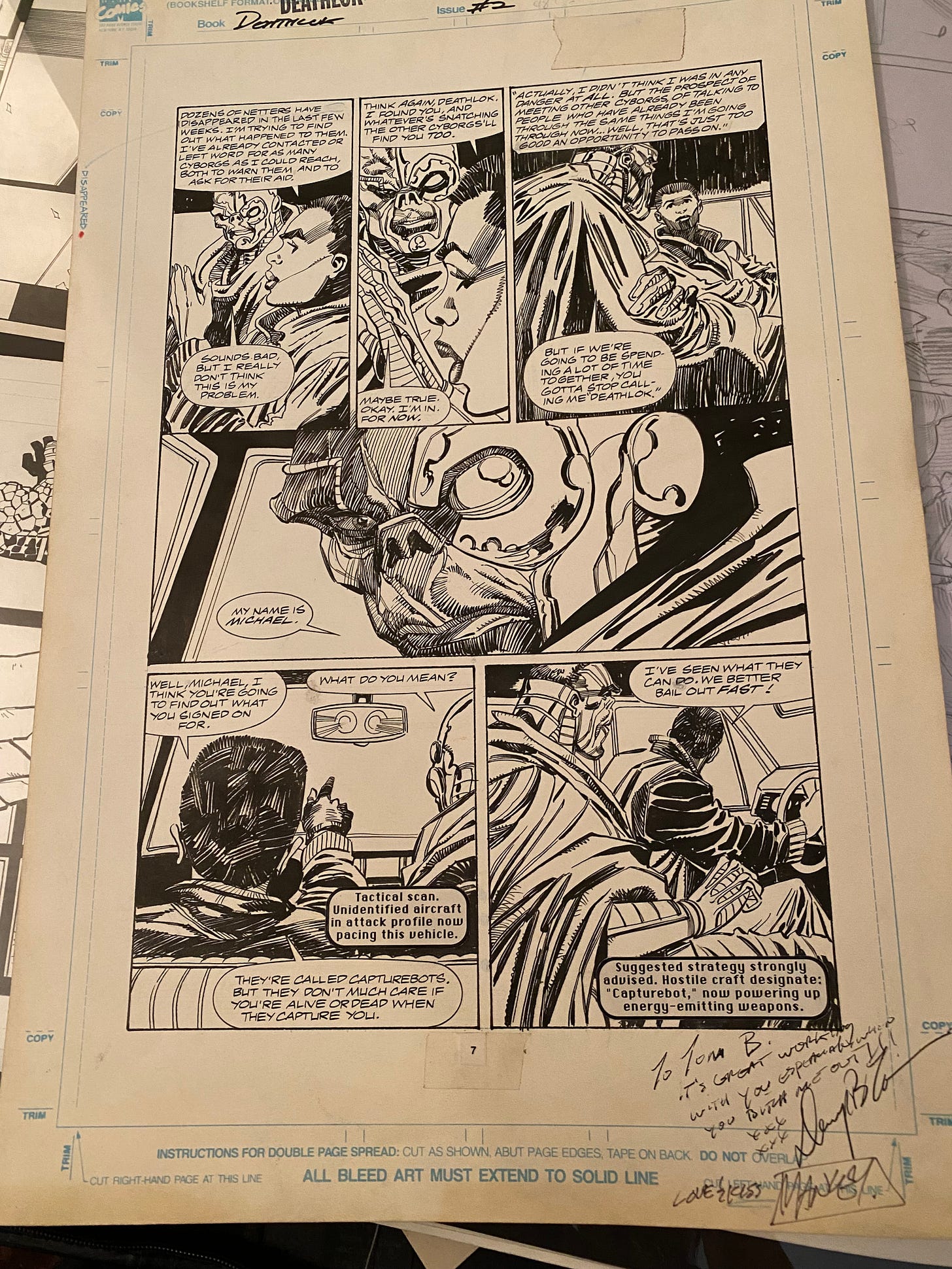
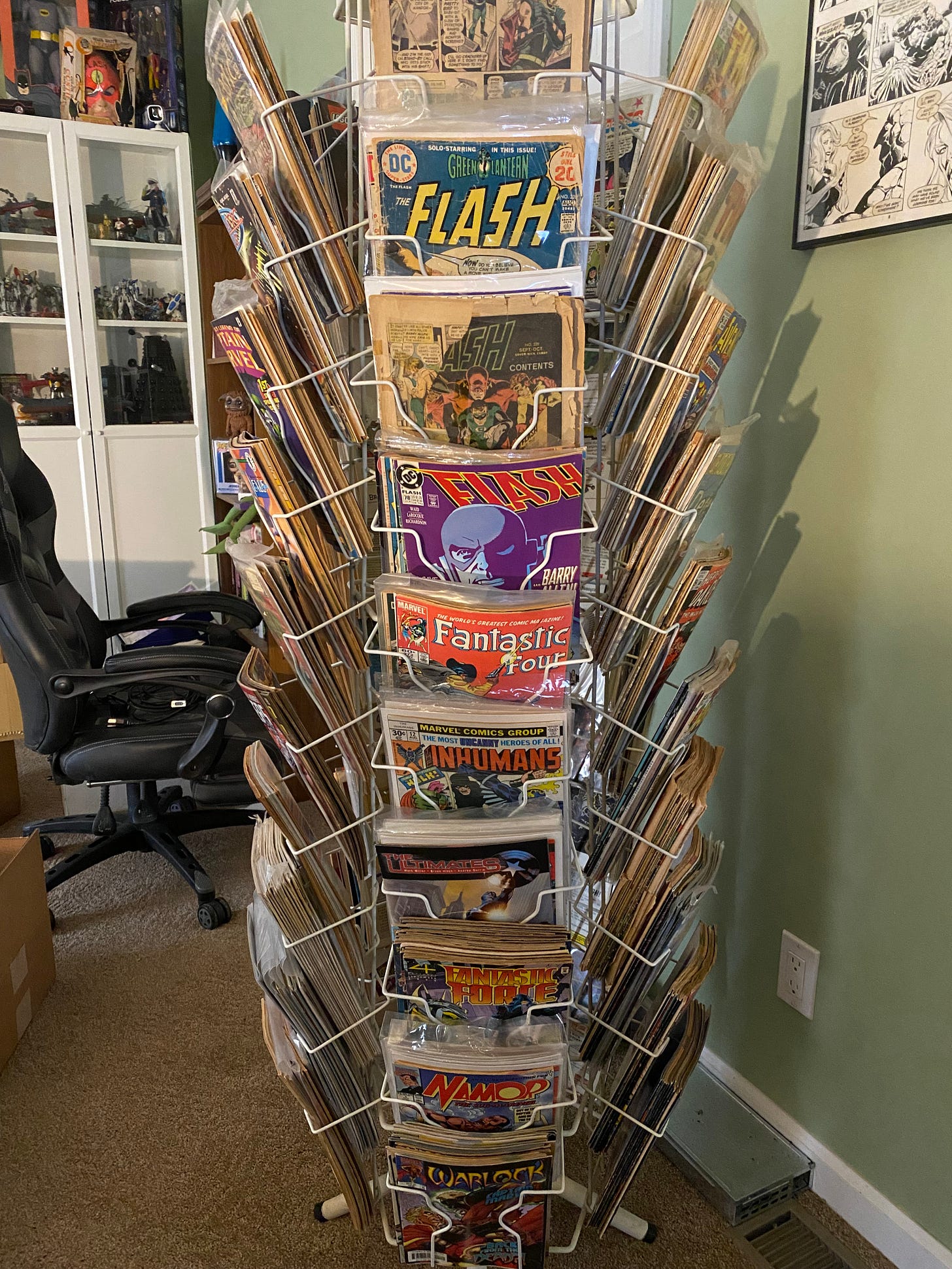
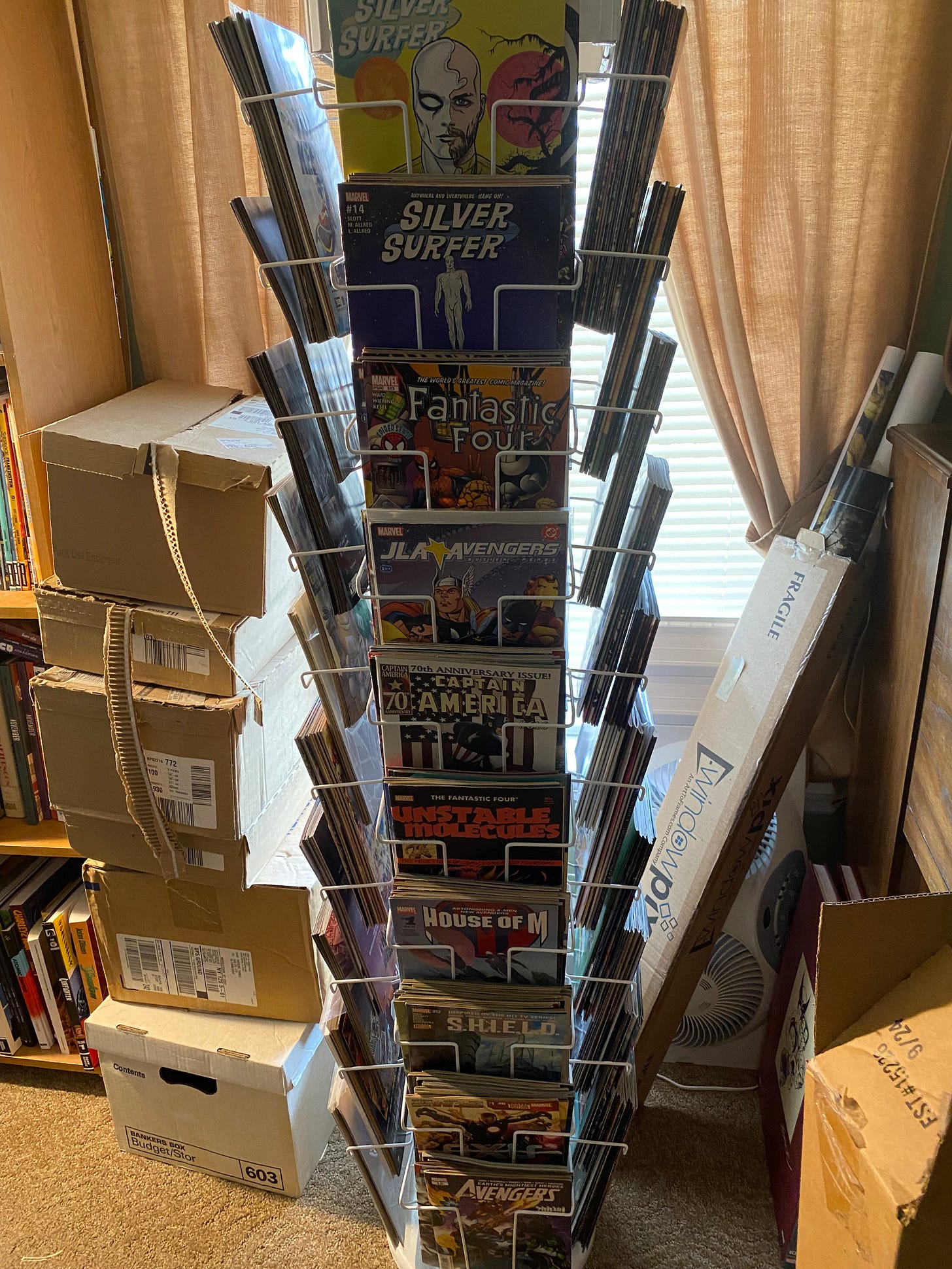


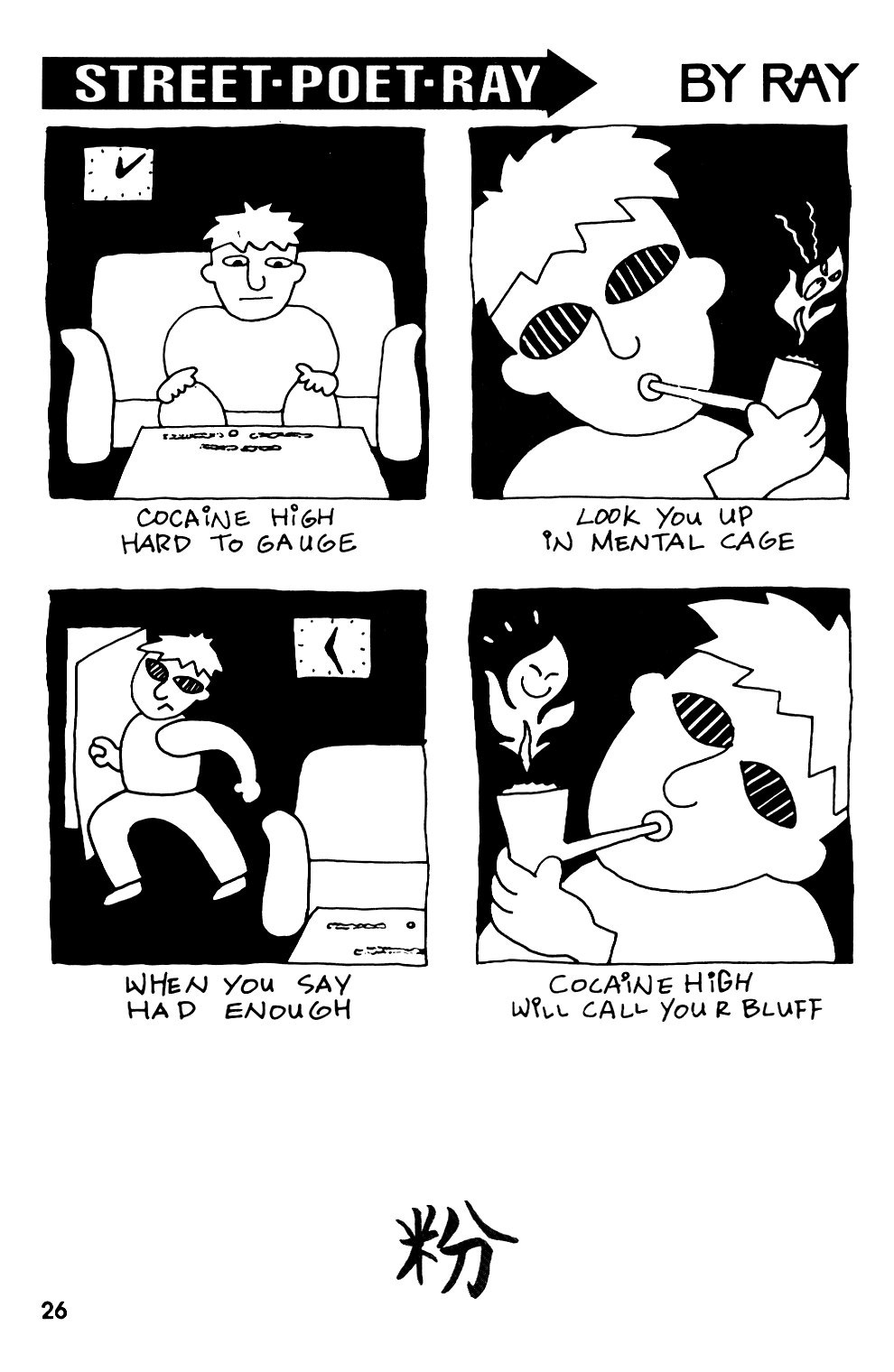
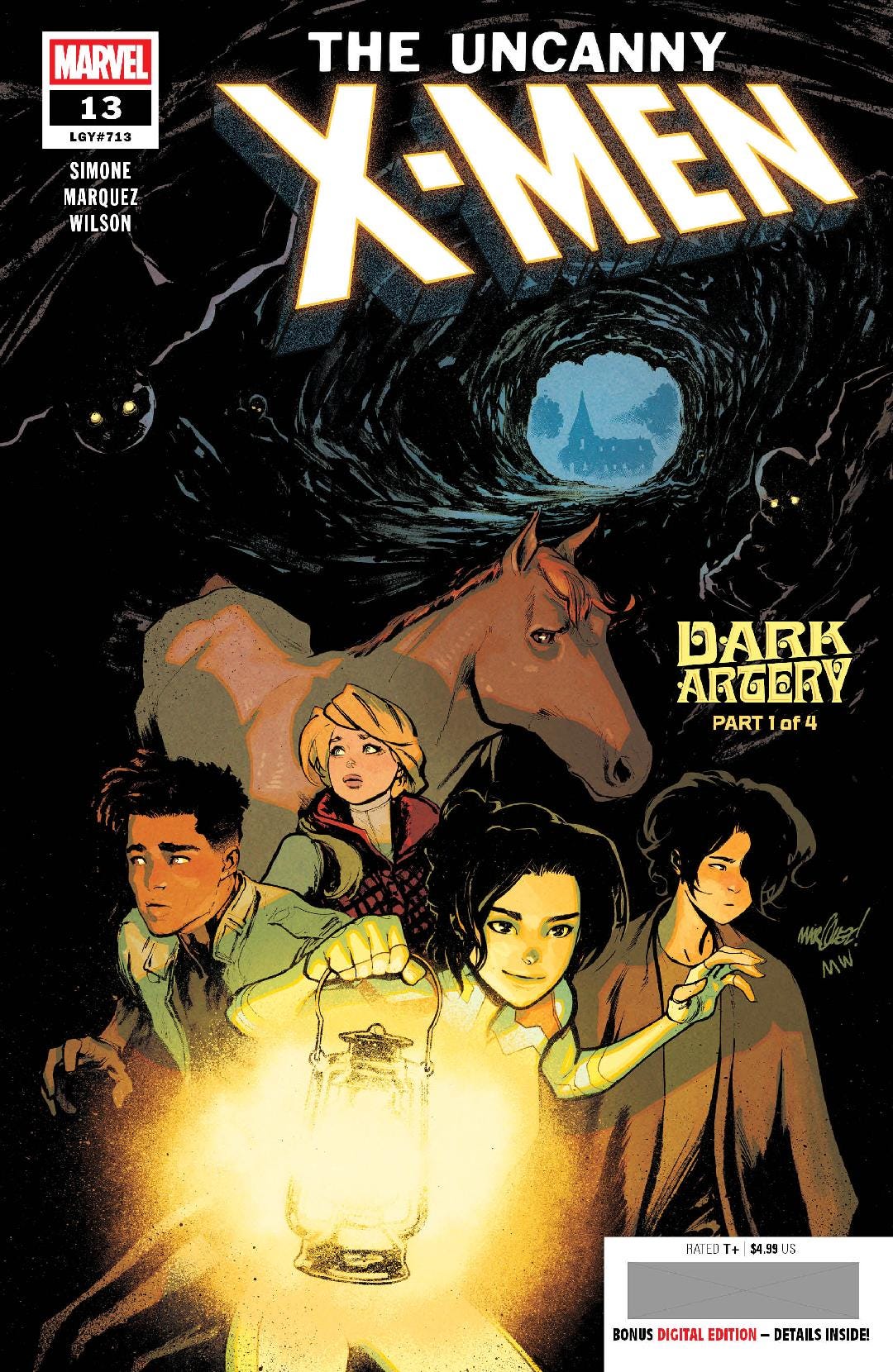
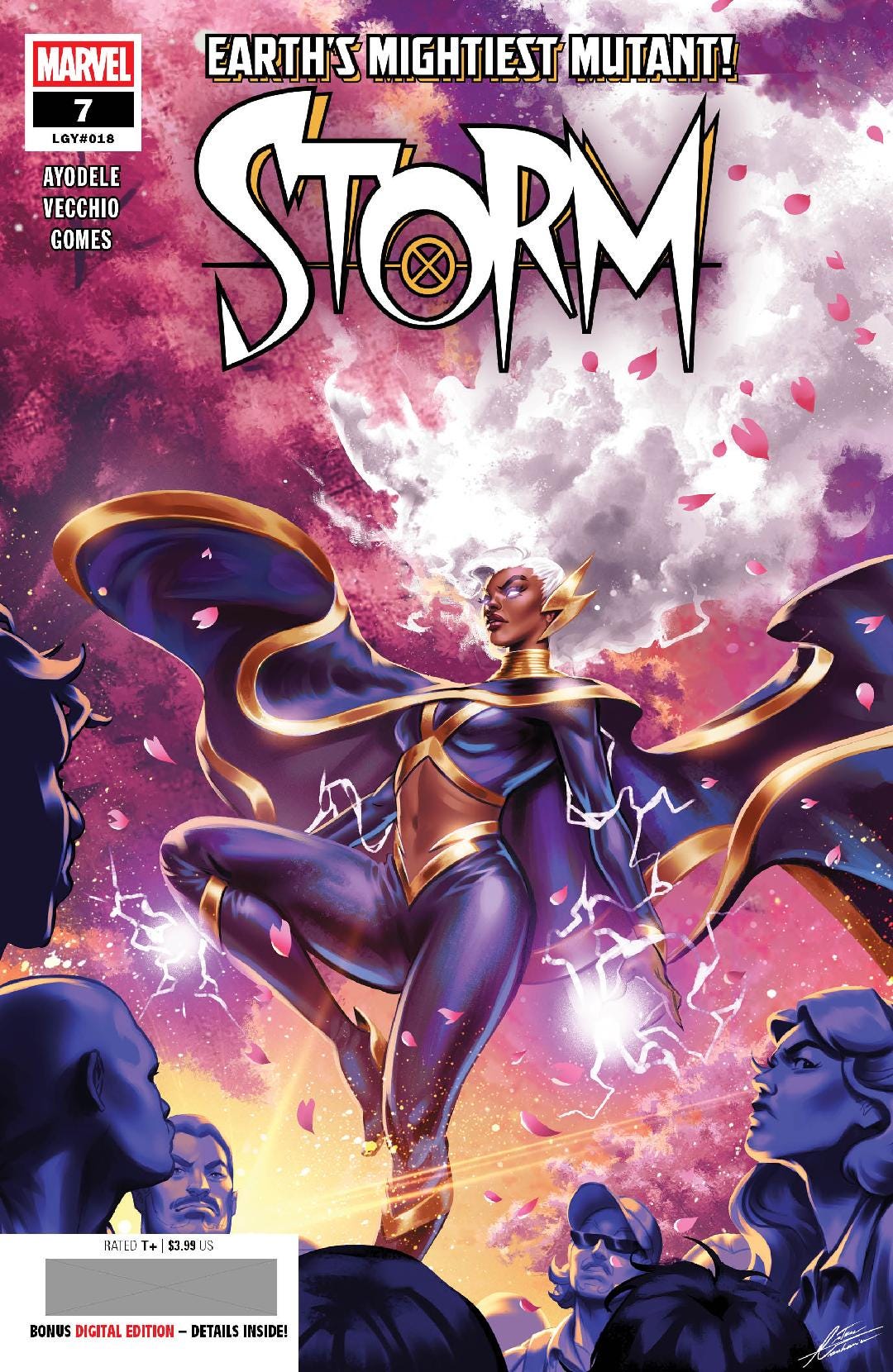
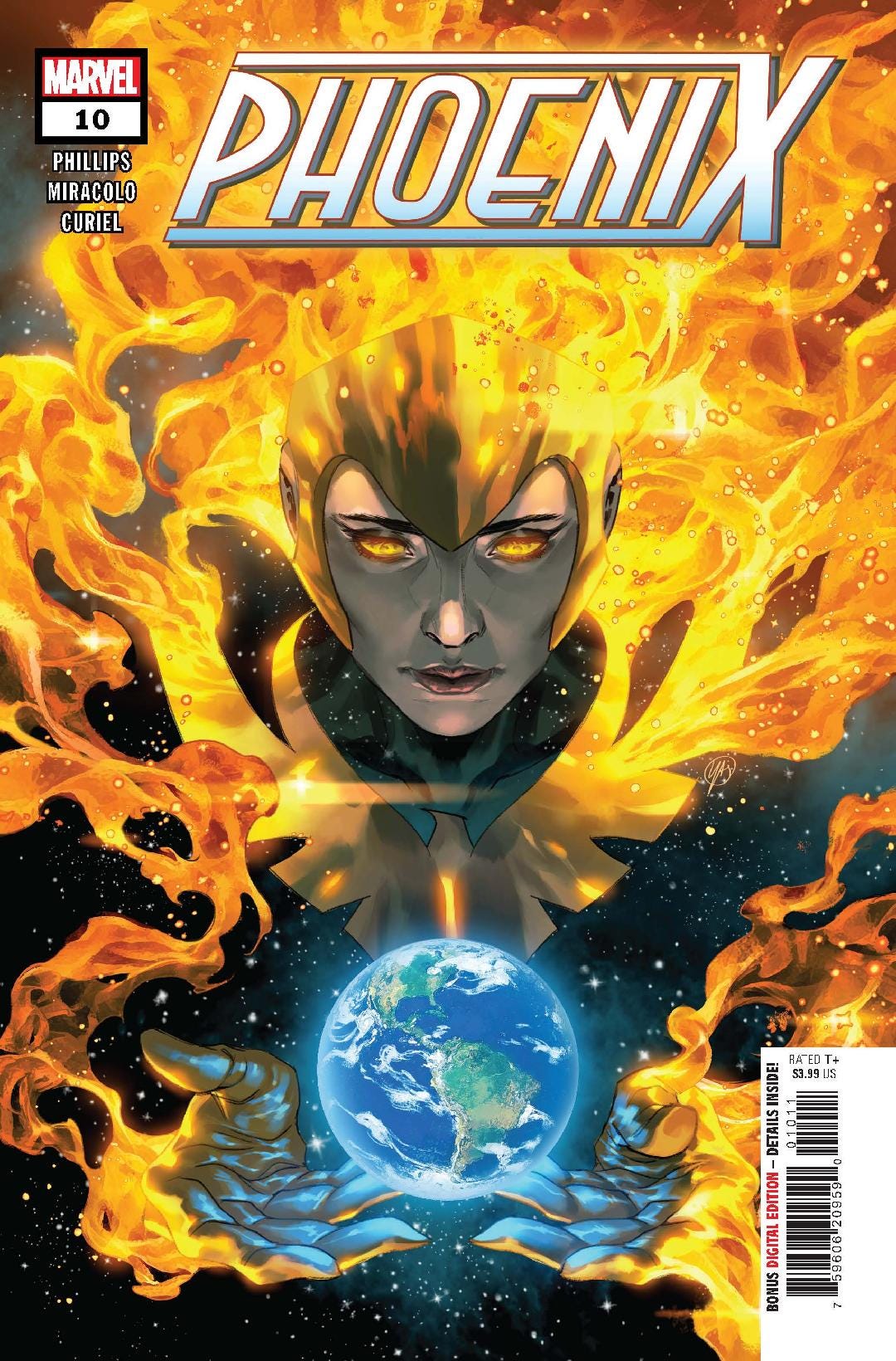
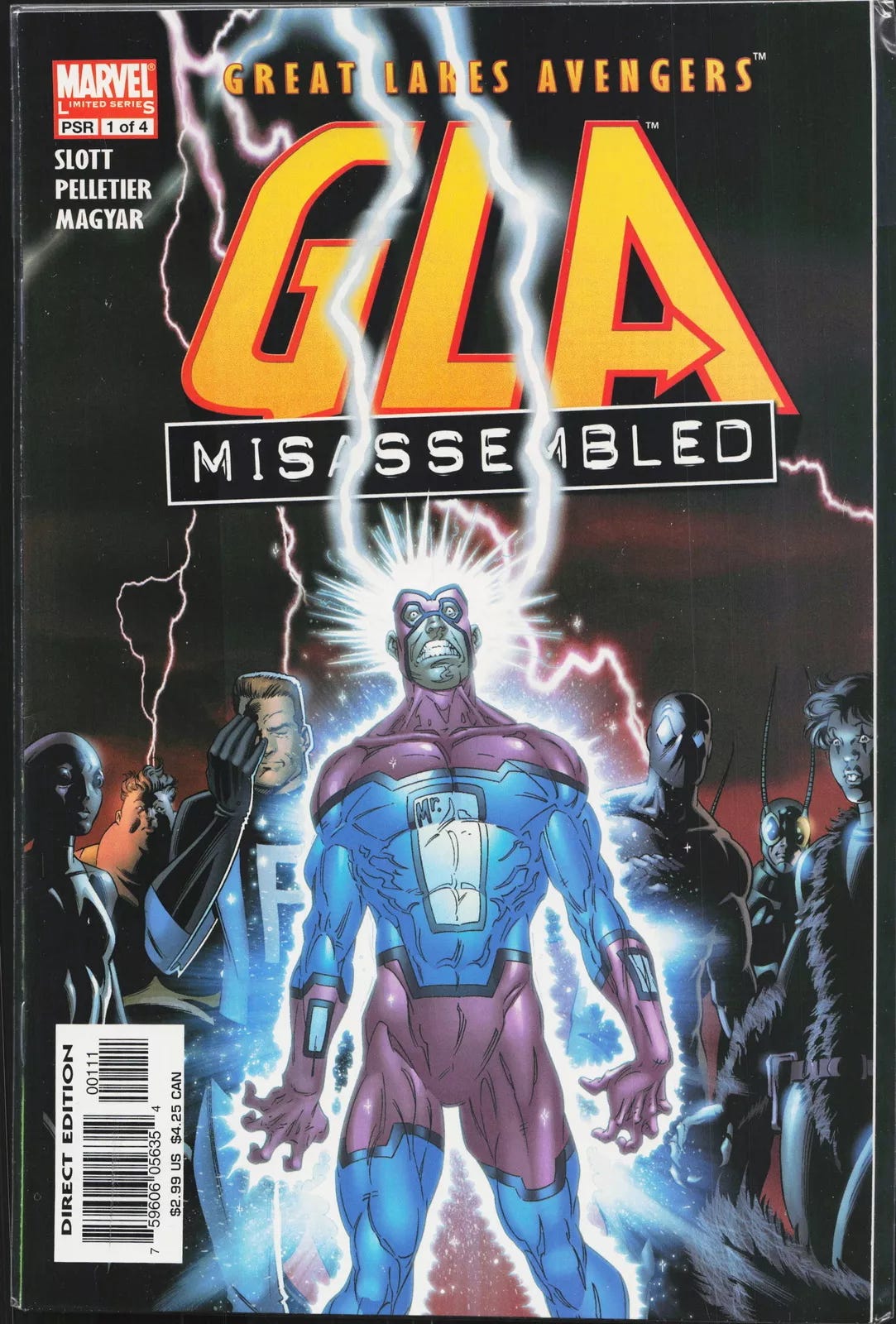
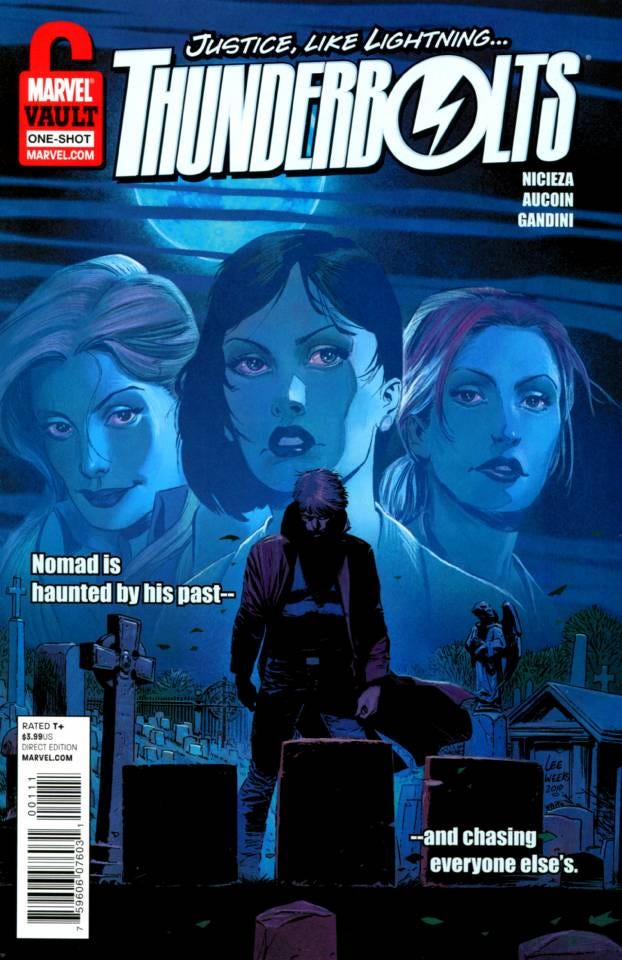
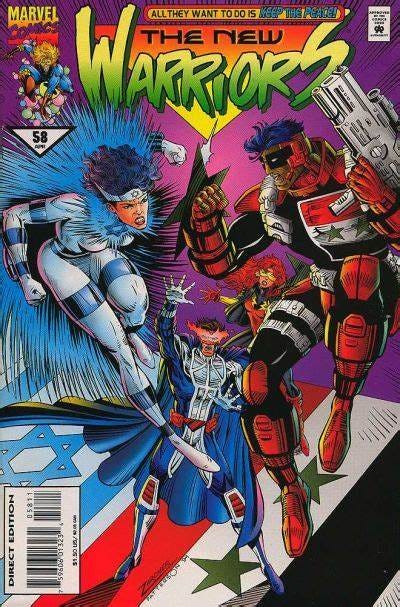
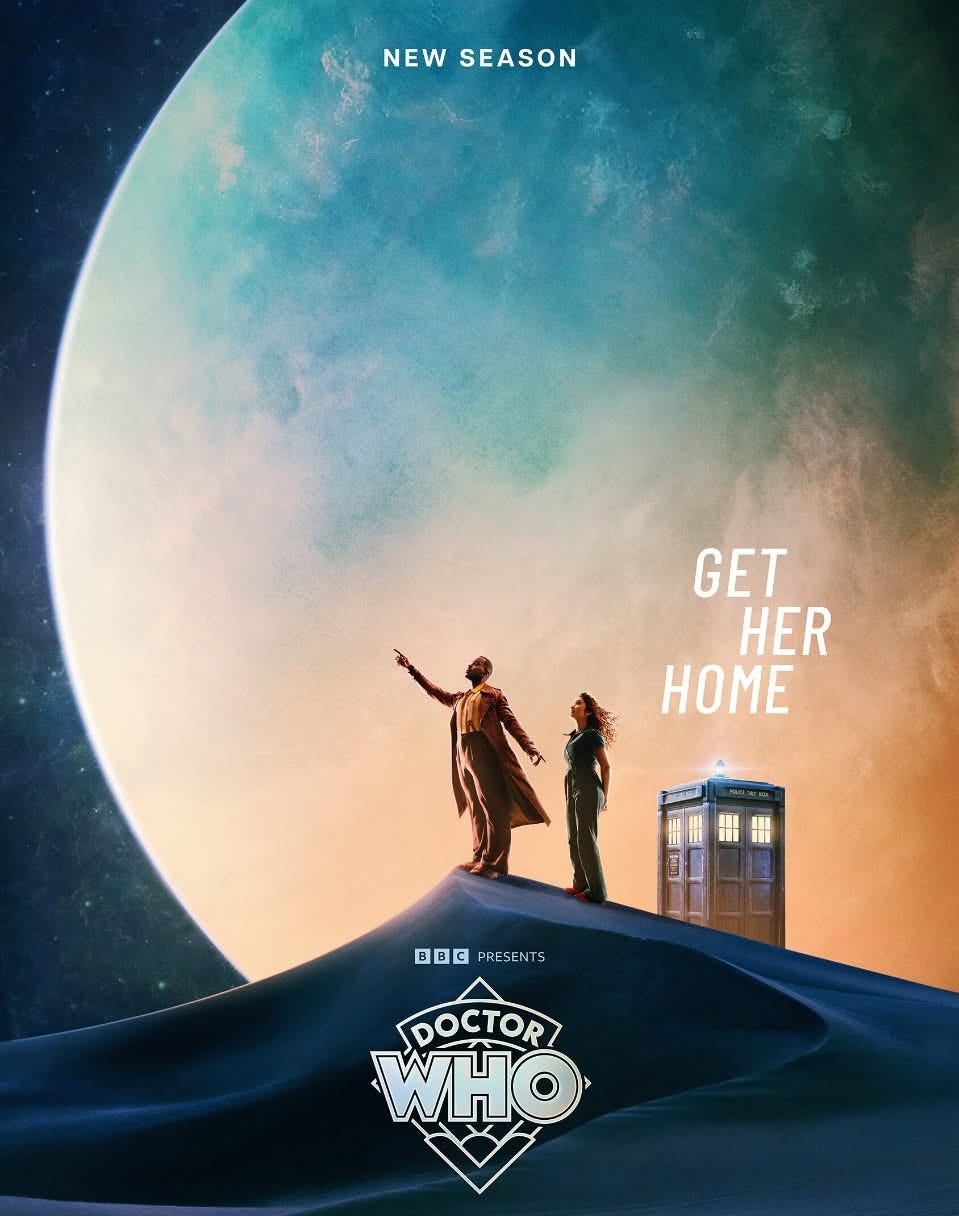
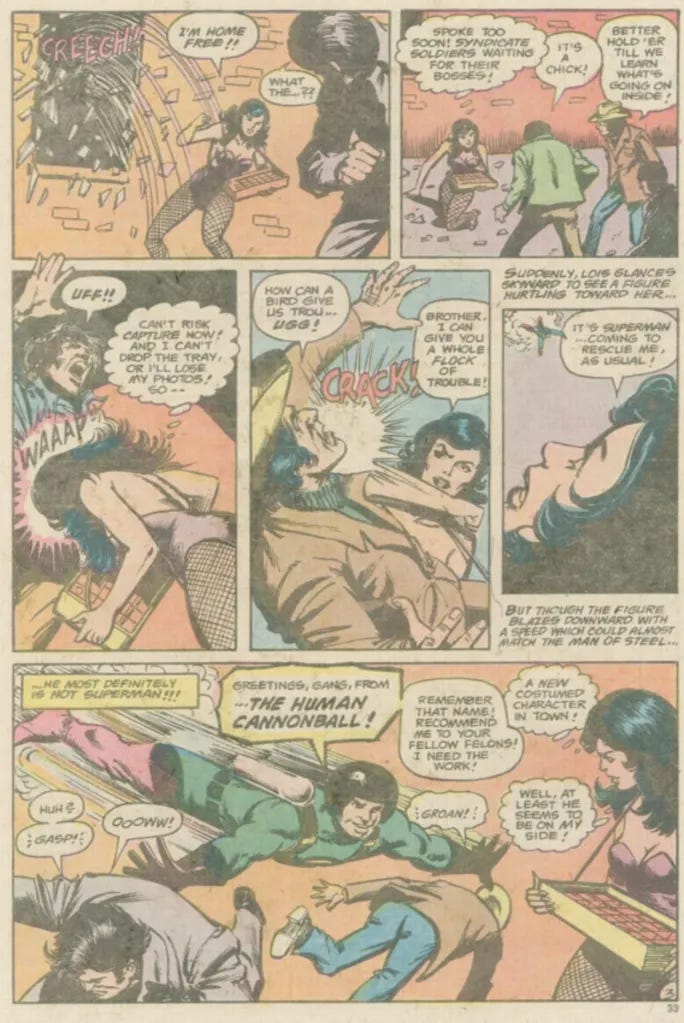
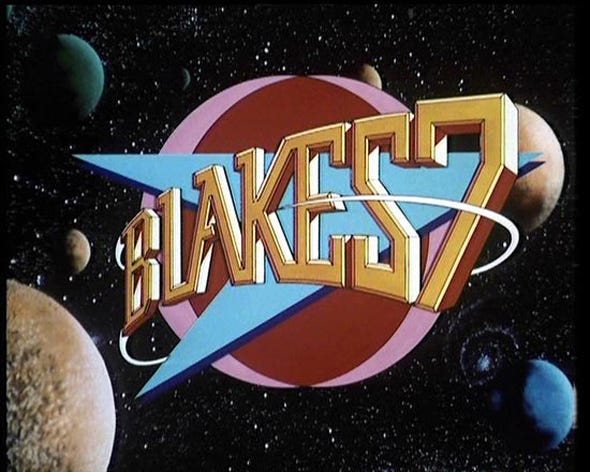
Hey Tom! I've got a few Phoenix questions for you.
To start simply, is the cosmic queen costume Jean's primary costume going forward? I'll have to admit I will miss the classic green and gold look that we got at the end of the Fall of X for the new solo.
With the return of Sara Grey, Cyclops appearing semi-frequently in the title, and Cable having a role in the third arc of the title - is there a chance that we might see Jean interact with Rachel Summers any time soon? Rachel has her own long and storied history with the Phoenix Force - going all the way back to the 811 universe, which the Prelude to Days of Future Past one-shot that was just revealed illuminates - and her relationship with Jean is one that is often overshadowed by her brothers'. Not just that, I know there were a lot of people excited at the prospect of the Askani variant for Phoenix #11... which turned out to be more an Askani'son variant... potentially hinting at her appearance in the book.
And on that subject, since the launch of From the Ashes Jean has been in her own little corner of the Marvel Universe, as Phoenix is - at least as of now - the only cosmic ongoing that is releasing at Marvel at this time. But I can't help but miss Jean's interactions with the rest of the X-Men; I understand wanting to explore her cosmic nature and her role as an existential force and hero, but knowing she is going to appear in Giant-Size X-Men #2 has me curious. Can we expect to see Jean a bit more involved with the rest of the mutant-sphere going forward?
Or perhaps... Imperial?
I hated an issue of New Warriors? I don't even remember ever reading an issue of New Warriors! But your memory of these events is always better than mine, Tom, so if you say so then it must have happened. (Coincidentally, I was just explaining Sabra to a friend of mine a couple of days ago when he proposed that I should create a Jewish super hero with a star of David on his/her forehead. I told him someone had already done that.)